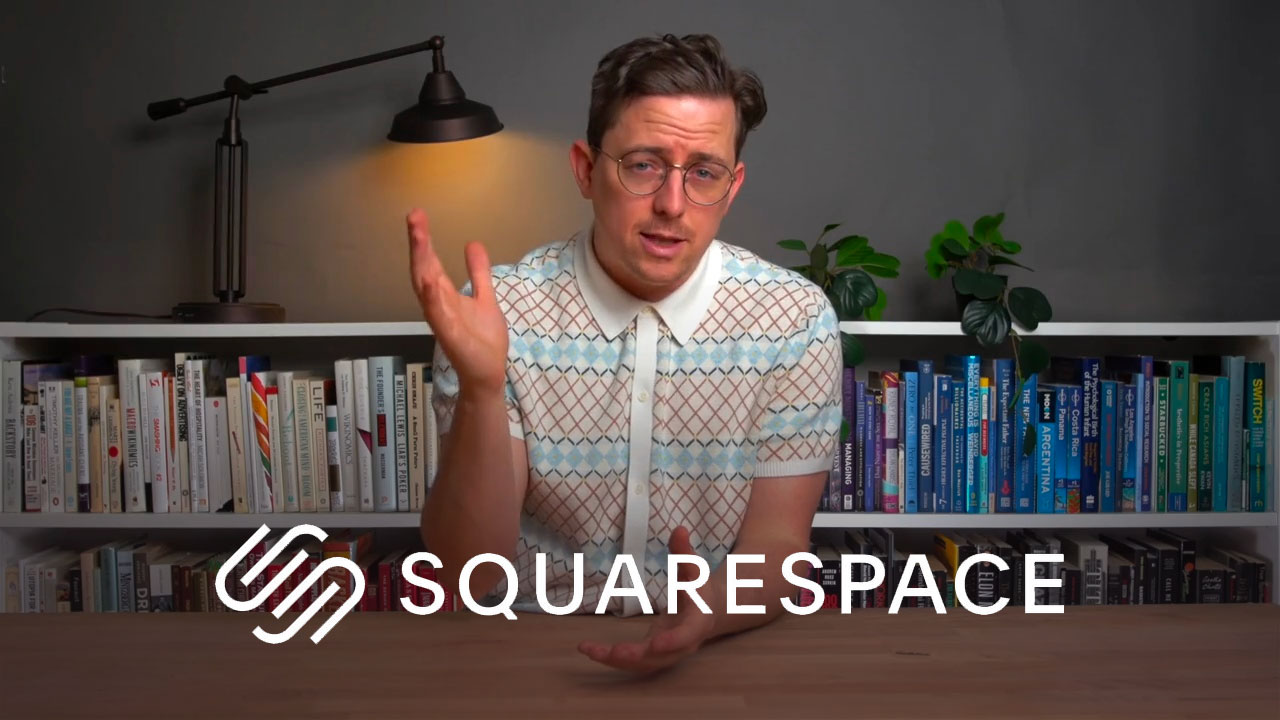Best Website Builder
I test every website builder so you don’t have to. These are my rankings of the best website builders in 2025.
Our work is supported by affiliate commissions. Learn More
By Juhil Mendpara | Updated Nov 4 2025
Squarespace is the best all-around website builder. It’s an excellent option for all types of websites a student might need: portfolios, resume/CV sites, blogs, club/event pages, side-hustle sites, and more.
The best part? If you’re an eligible student, you can get 50% off your first year on an annual plan—which is already an excellent value at regular prices, BTW.
Squarespace has partnered with Student Beans to offer a 50% discount on all its plans to current full-time students.
You can get the discount only if you are a first-time user choosing the annual plan. Also, you can’t combine it with any other offers.

To receive the discount, you have to:
The code you get is a single-use offer code that can be generated every 12 months.
| Plan | Regular Prices (annual) | Student 50% Off (first year) | Effective first-year monthly |
| Basic | $16/mo ($192/yr) | $96/yr | $8/mo |
| Core | $23/mo ($276/yr) | $138/yr | $11.50/mo |
| Plus | $39/mo ($468/yr) | $234/yr | $19.50/mo |
| Advanced | $99/mo ($1,188/yr) | $594/yr | $49.50/mo |
Squarespace is used by all kinds of students:










Squarespace has clean, modern, and editable website templates for all kinds of student websites, including portfolio sites, resume sites, blogs, ecommerce sites, etc.
Check Out Squarespace’s Templates →

Students building a general website can add a pre-designed portfolio page to showcase their work. It’s a page that links to your other pages, like projects, portfolios, and galleries.
Similarly, Squarespace offers pre-designed About, Contact, Service, etc., pages that make website building quick & easy.

You can also use dedicated portfolio sections on an existing page. Squarespace gives various layout options, such as grids and slideshows, to display your work in an organized and visually appealing manner.

Squarespace Overview & Using Its Editing System
Intuitively drag and drop blocks anywhere in a section with Squarespace’s Fluid Engine editing system. This structured approach gives enough customization while being intuitive and easy to use for both tech and non-tech students.
| Feature | Why It Matters | Student Use Case |
| Blogging | Built-in blog with categories, tags, scheduled publishing, and RSS feeds makes it easy to share content consistently and keep readers updated. | Publish class reflections, research write-ups, project journals, or tutorials to showcase your expertise. |
| Forms | Customizable forms let you collect sign-ups, feedback, and inquiries directly on your site. | Gather club memberships, project collaboration requests, or internship inquiries from visitors. |
| Scheduling | Squarespace integrates a booking calendar so visitors can pick and book time slots that sync with your schedule. | Offer tutoring sessions, schedule office hours, or manage meeting times for projects and clubs. |
| Ecommerce | Built-in storefront supports physical and digital products, with secure checkout and payment processing. | Sell club merchandise, prints, e-books, or digital downloads; run side hustles or fundraiser sales. |
| SEO Tools | Automatic clean URLs, customizable meta titles and descriptions, and SSL certificates improve search visibility and site credibility. | Make it easier for recruiters, admissions teams, and peers to find your portfolio or resume site. |
| Analytics | Real-time analytics show traffic sources, popular pages, and visitor behavior so you can optimize your site. | See which projects recruiters view most, measure blog readership, or track engagement over time. |
A great portfolio helps you stand out for internships, jobs, or grad school applications. Here’s a simple step-by-step guide for students:
Look at other student portfolios to see what works. Notice how they showcase class projects, internships, and personal work. Pay attention to layouts, navigation styles, colors, and typography.
Pick a template that fits your goals—design, engineering, art, writing, etc. Or try Squarespace’s AI tool, Blueprint AI, to generate a starting design. All Squarespace templates are fully customizable using Squarespace’s drag-and-drop editor, so don’t stress about picking the “perfect” one.
Keep it simple and professional. A solid student portfolio usually has:
Tip: Keep the navigation clear with 3–5 menu items max.
Showcase your best work, not everything you’ve done.
Your work should shine, so keep the design minimal:
Make your portfolio personal and easy to contact:
Need more detail? See the complete step-by-step guide for portfolio websites here →
Use code SBR10 to get 10% off Squarespace to get the maximum discount if you are not eligible for student discounts.


